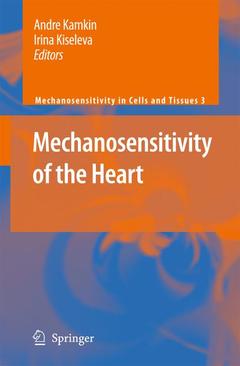Mechanosensitivity of the Heart, 2010 Mechanosensitivity in Cells and Tissues Series, Vol. 3

This book presents the latest findings in field of research of mechanosensitivity of the heart. The Volume focuses on molecular mechanisms of mechanotransduction in cardiac cells. It contains a detailed description of several stretch-induced signaling cascades with multiple levels of crosstalk between different pathways. It highlights the role of cardiac stretch-activated channels and their contribution to cardiac performance. This book provides justification of scientific significance and potential for clinical applications of findings of fundamental investigations in the field of mechanosensitivity, which is stressed by description of reported increased sensitivity of cardiac cells to mechanical stress under various pathological conditions. It contains new insights into mechanoelectrical feedback on the level of the whole heart and results of experimental investigations of electromechanical properties of cardiac tissue.
This book is a unique collection of reviews outlining current knowledge and future developments in this rapidly growing field. Currently, investigations of the effects of mechanical stress on the heart are focused on several issues. The majority of studies investigate the effects of mechanical stimulation on mechanosensitive channels, as its primary target and interactive agent, and aim on description of downstream intracellular signaling pathways together with addressing general issues of biomechanics of the heart. Knowledge of biomechanics, and mechanisms which underlie it on molecular, cellular, tissue, organ and organism, is necessary for understanding of the normal functioning of living organisms and allows to predict changes, which arise due to alterations of their environment, and possibly will allow to develop new methods of artificial intervention.
The book brings up the problem closer to the experts in related medical and biological sciences as well as practicing doctors besides just presenting the latest achievements in the field.
Date de parution : 03-2012
Ouvrage de 471 p.
15.5x23.5 cm
Date de parution : 12-2009
Ouvrage de 471 p.
15.5x23.5 cm
Thèmes de Mechanosensitivity of the Heart :
Mots-clés :
Activation; Angiotensin II; biomechanics; cells; dynamics; molecular mechanisms; tissue



